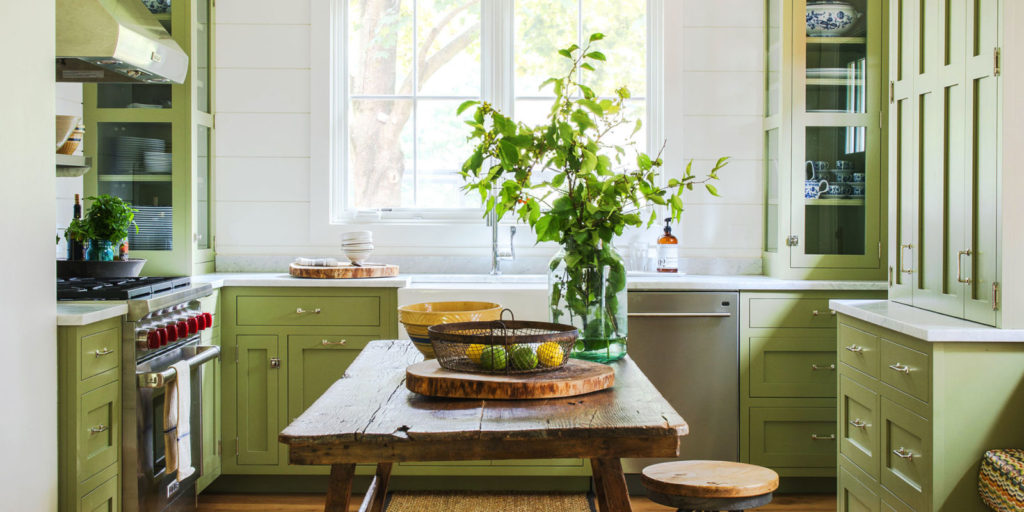Home renovations don’t happen very often but when they do, you should use the opportunity make your home appear fresh and well-designed. It’s also an opportunity to make it more eco-friendly.
In the long run, green renovations offer many savings as the ecological additions to your household will cut down on energy use and resource waste. This will ultimately save you money on your power bills. Some of these renovation ideas require initial spending but they pay off in the end.
Words: Amelia Atkins
Solar panels
Solar panels are usually the most complex and most expensive addition to your home that you can purchase for a renovation project. Many hesitate to start using them because of their installation costs and the fact that the usage of the panels depends on the weather.
Modern solar panels allow you to get off the traditional electrical grid gradually without ever having to worry about having enough power. The batteries are charged while there’s enough light and you can continue to use the saved solar power even there’s no sunlight.
Air sealing and insulation
An average household spends and wastes the most energy on heating and cooling down the property. If you manage to reduce the waste in this area, you’ll both save money and cut down on your carbon footprint. This is best done by isolating the home and avoiding losing the hot or cool air.
Make sure that you discuss the material used for insulation with your contractor. Some of the materials used can be both unhealthy and bad for the environment. Therefore, get into details about it because you want to find a contractor using natural materials.
Water
Water is rarely thought of as a resource let alone a scarce one. However, that’s what it is and it’s going to be even harder to find clean and healthy water. It might be useful and lucrative to set up a mechanism for the conservation of drinking water while you’re renovating your home.
The easiest way to start is to install movement activated faucets. They are relatively inexpensive and they save water simply because they shoot down the water faster than traditional ones. If you want to go beyond that, collecting rainwater is the next good step although it requires more infrastructure.
Local materials and equipment
One of the ways the renovation affects the environment isn’t about the works being done on your home in particular, but it’s connected to the infrastructure and the materials needed to complete the project. It’s much less harmful to use the local and recycled materials than to import them and haul them around.
The same goes for scaffolding for hire and other safety-related precautions you need to hire for completing a remodeling project. In fact, all of these need to be considered from an environmentalist perspective as well as in regards to their price and quality of work.
Appliances
A lot can be accomplished without some elaborate and expensive renovation plan that requires professional workers and a big disruption of your daily life. Sometimes it’s enough to change the appliances that you use every day with energy savings in mind. These appliances are usually clearly marked (by a blue star) as designed for these features.
It’s also useful to have a professional electrician check the appliances you’re using at the time every year or so. These checkups aren’t as expensive as ordinary repairs because they happen regularly and they can save you quite a lot of money in the long-run.
Wood
Wood is probably the most used material in every home. Choosing the right type of wood can be one of the most important decisions in terms of environmental impact and in term of the cost of the renovation. Using reclaimed wood from your local shops is less expensive. In addition to that, they provide retro aesthetic and can be used both in the modern and traditional setting.
There’s also an option of using wood that doesn’t need to be cut in order to be utilized in construction. Bamboo is the most inexpensive and versatile of these. It isn’t that easy to find, but it has all the quality of the traditional wood without leading to deforestation.
A garden
Adding a garden to the backyard of a modern home is one of the most impactful things you can do when it comes to cutting down your carbon footprint. A lot of the carbon footprint which an average family produces comes from the food they consume. By having your own garden in the backyard you can cut down the footprint dramatically and be sure that you’re eating healthy food.
Try to use only local products and make your own compost and the food your family uses will be much less expensive and won’t require almost any gas or electricity.
There are ways to renovate your home inexpensively while making it more eco-friendly. It’s an initial expense but it improves the home significantly.


